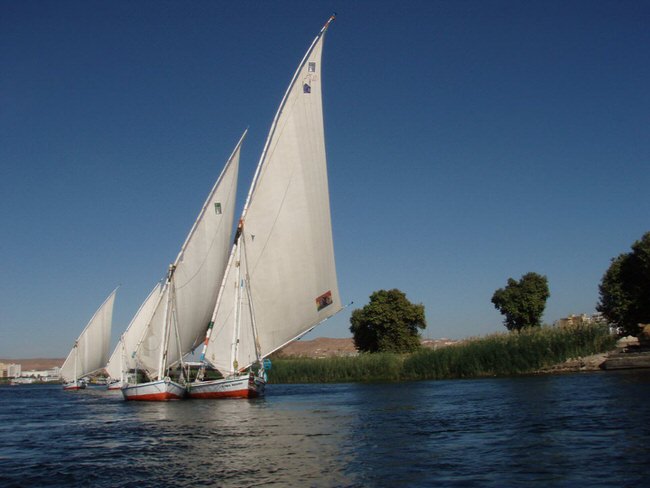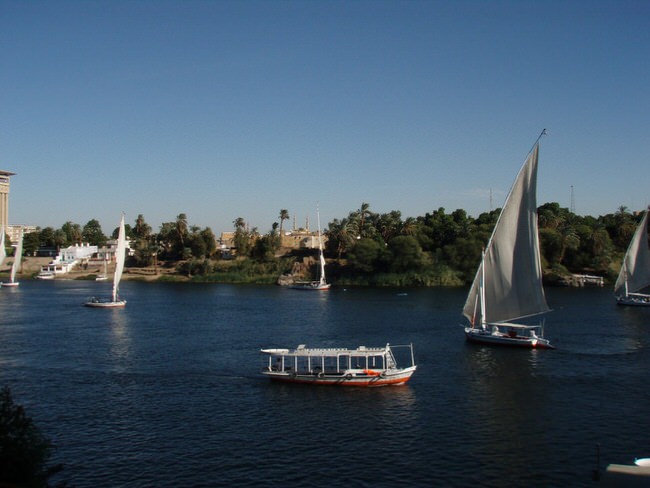
Cairo
The famous Arab traveler lbn Battuta called 14th-century Cairo” the mother of all cities” – a distinction which still applies to the modern capital of Egypt. For Cairo is not only the largest city in Africa and the intellectual center of the Arab world, it is also an unbelievable symbiosis of all conceivable modern ways of life. The dark side of this sparkling microcosm cannot be overlooked, of course, but the joy of life and unshakable humor of the inhabitants of this metropolis cannot be destroyed, even under the difficult conditions of a hopelessly overpopulated city.
There is the hectic, loud, giant city – a megalopolis which has merged into the cities of Giza and Shubra al-Khaima, both of which have more than a million inhabitants, and a series of suburbs and satellite towns to form Greater Cairo. Just how many people really live here no one knows for sure; 13 million, 15 million – or more? The figures vary. The only thing you can be sure about is that the high birth rate combined with the immigration of people from the countryside increases the population of Cairo by tens of thousands every year. The result of this is a unique density of population; in some of the poorer quarters there are more than 100,000 people per square kilometer.
The cityscape of Greater Cairo is dominated by faceless new buildings of the kind that are to be found all over the world. Yet around the Midan at-Tahr?r and along the banks of the Nile the modern architecture gains a more cosmopolitan feel. Hotels and government and office buildings grow increasingly taller, forming an impressive skyline. The somewhat American character of this bustling metropolis is highlighted by the evening glow of colorful neon signs and the wide freeways with their bold, high bridges.
But alongside this there is a completely different Cairo: a city of cupolas and minarets, where colorful bazaars stretch along the clay-grey confusion of streets between the old city gates of Bab alFutuh and Bab Zuweila. Here it seems as if the modern age has yet to arrive. If not for the occasional motorized vehicle trying to makes its way through the overcrowded shopping streets, a person could almost believe that he had been picked up on a flying carpet and transported back to the Middle Ages.
Excursions in Cairo
“Cairo is heaven on earth for those who have eyes to see,” an enthusiastic Arab poet once said of the capital of Egypt. But today noise, dust, smog, chaotic traffic and swarms of people are often all that the newcomer to Cairo can see, and many return home thinking “if it wasn’t for the pyramids and the Egyptian Museum…” Yet Cairo has far more to offer.
An Oriental kaleidoscope awaits you if you are prepared to walk through the city with open eyes and no preconceptions. As paradoxical as it may sound, Cairo can – and indeed should – be discovered on foot. Only on foot will you discover delightful surprises on every street corner: booksellers with their wares broadly spread out on the pavement; a tea house with men in turbans lazily puffing hookahs and immersed in a game of dominoes out front; the countless colorful food stalls or the vegetable barrows with their carefully-stacked pyramids of oranges.
Flower sellers take advantage of the unavoidable traffic jams to sell aromatic jasmine blossom chains to car drivers, and no one is ever surprised about the number of travelers who only have one horse power moving through the middle of the city traffic.
A leisurely stroll is without a doubt the best and most charming way of discovering Cairo’s city center; for this is the only way of getting a feel for the rhythm of this fascinating and contradictory city. The following sections show how you can combine such a stroll with visits to Cairo’s sights, and historical and artistic treasures. Each one combines sights that are located in close proximity to one another, presenting them in the framework of a short – or at times somewhat longer – excursion that can pleasantly be undertaken in the city; either on its own, or in combination with another.
Al-Gazira and the West Bank
The island of AI-Gazira can be easily reached on foot from Midan at-Tahrir over the Tahrir Bridge. A trip in a carriage or on a boat (stand and moorings on the Corniche) can be a pleasant alternative to walking.
Al-Gazira Square (Midan al-Gazira) is dominated by a statue of Sa’d ZaghInl, founder of the Wafd party and the first prime minister of the independent monarchy. Directly behind it is the entrance to the new Cultural Center, built on the site of Cairo’s old exhibition grounds. The centerpiece of the wellmaintained park is the Oriental-style cupola of the Opera House, which was opened in 1988. Its rather pompous postmodernist beauty is the work, strangely enough, of a Japanese architect. Two of the former pavilions now house a small Museum of Modern Art and a Municipal Gallery for temporary exhibitions of the work of contemporary artists.
In the small park to the south of the island is the Mukhtar Museum, which houses a collection of works by Egypt’s most famous modern sculptor, Mahmud Mukhtar. The southernmost tip of the island is marked by the round tower of the Sheraton Hotel. The terrace cafe of the hotel offers a wonderful view of the Nile in general, and of the fountains in the middle of the river.
The landmark of the island is the 187meter-high stylized concrete lotus blossom of the Cairo Tower. On a clear day a wonderful panorama of the city extends from the viewing platform and from the tower restaurant. At the foot of the tower is the Pharaonic Garden, a small park containing ancient Egyptian statues. Not far away the Obelisk of Ramses II stands directly on the Nile. On its southern side you will find the Andalusian Garden, laid out in the Moorish style, a favorite destination for the inhabitants of Cairo.
To the north of the Cairo Tower are the Al-Gazira Club’s sports facilities, which border on the district of Zamalik. This well-kept district is the preferred location of embassies and foreign missions. Apart from these you will also find a number of chic boutiques and the Cairo Marriott Hotel right on the Nile. The flat central building of the hotel was originally one of the palaces built for the inauguration of the Suez Canal. It is here that Emperor Napoleon III and Empress Eugenie were intended to find fitting accomodation for themselves.
Remember–We can save you a lot of Time, Money and Stress when you book your trip with our Virtuoso Cairo Vacation Specialists.
The Cairo tours, hotel and resorts prices you see on this site are published fares–ours are often substantially lower. Use our vacation planner or call us at 1 415 827 4981 or 1 415 446 5252 for our latest, exclusive up-to-the-minute specials.




